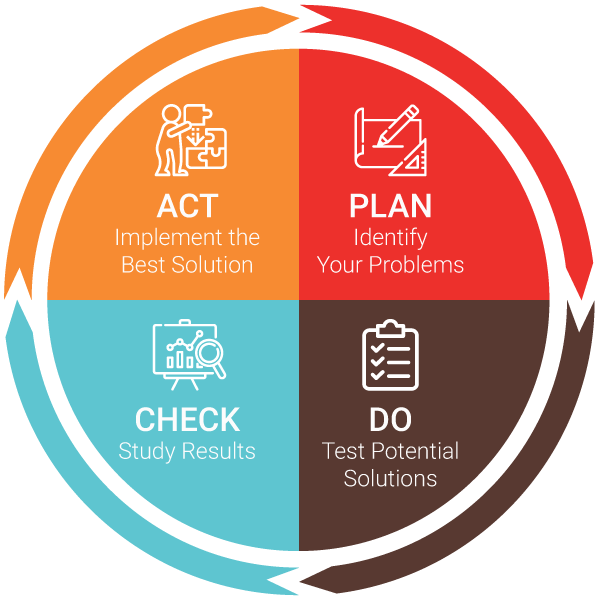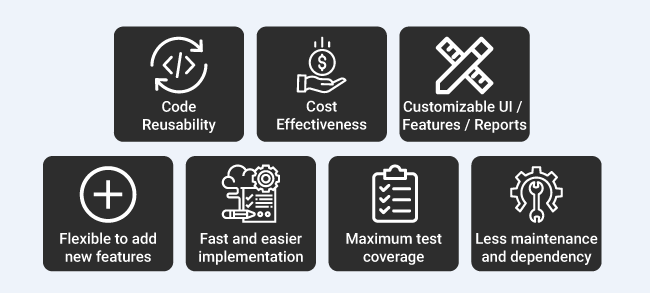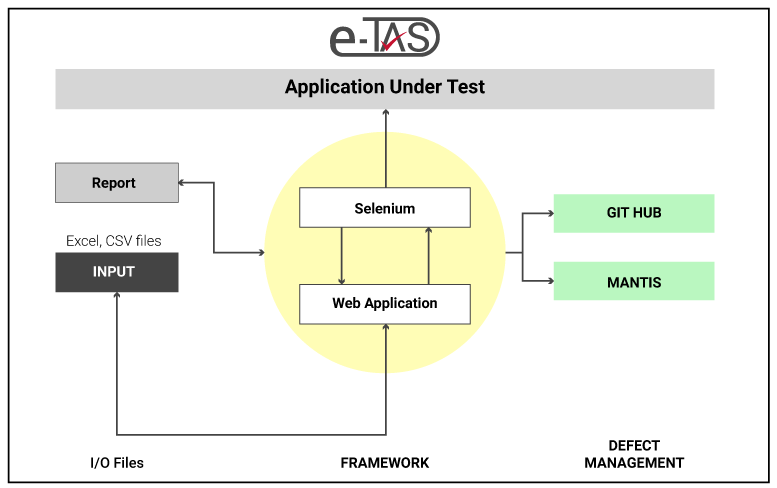
Every organization runs its business using software, and such softwares should be thoroughly tested before it gets released into the market. At this stage, automation testing is essential for the rapid release of effective and secure software products. To achieve this, the testing team adopts automation frameworks as it helps them to manage complicated testing tasks within the PDCA (Plan-DO-Check-Act) cycle even with less experience.

Automation frameworks form an integral part of any automation testing process. It acts as a pillar in the successful completion of automation projects. The framework helps the QA team in their testing efforts, improves test speed and accuracy, and increases test efficiency by providing a high return on investments (ROI). Framework implementation reduces overall maintenance costs and optimizes the agile testing process. Ideally, lightweight test automation frameworks are considered as they are designed explicitly to automate the regression tests.
Let’s understand the Lightweight Testing Automation Framework
Lightweight Testing Automation Framework (LTAF) is a tool designed to perform integration and regression tests by enabling web browser scripting to perform subsequent actions against the application interface. LTAF simulates operations similar to an actual user action, such as texting, clicking links, scrolling the page, submitting buttons, and simultaneously verifying the expected results in the browser window. LTAF is termed as lightweight as it involves relatively simple programs or less code. The lightweight automation tool is predominantly associated with the agile software development method.
You can consider a variety of automation framework approaches for your industry. To list a few, we have open-source, commercial, and heavyweight test automation frameworks. Compared to all of these, Lightweight automation framework implementation is quicker, with significant benefits. Lightweight frameworks are used to ramp-up the regression test, which involves testing an application to ensure that the existing functionalities are not affected due to the introduction of new code updates or enhancements.
Test Automation Framework benefits:
The automation tools are essential to improve the efficiency of testing processes. Its implementation strengthens the testing process enormously, ensuring:

Code Reusability – Allows quick re-use of existing code or functions to create a new program without re-writing it again.
Cost-effectiveness – Cloud-based automation frameworks enable you to execute unlimited projects that are made available worldwide to unlimited users.
Customizable UI / Features /Reports – Customizable frameworks help in creating user-friendly reports.
Flexible to add new features – Integration of manual test case with the automation tool allows the QA team to make quick decisions about test cases requiring automation.
Fast and easier implementation – Simple architecture and design make it easier for tool implementation.
Maximum test coverage – Improves testing consistency by optimizing code coverage and providing test cases for all functionalities of the program.
Less maintenance and dependency– Frameworks aids with quick test script creation. Test scripts generated are independent of platform and test applications.
e-TAS – Web Automation Tool
Estuate has developed one such robust, in-house lightweight web automation tool called eTAS (Estuate Test Automation Solution). eTAS is a highly efficient and customizable tool with convenient features that delivers quick and precise results with minimal manual intervention. The tool uses a parameterized – keyword driven framework to automate regression tests for an application.

Some of the eTAS features include:
- Script-less automation – Adopts scriptless automation approach for automating test cases. This approach helps the QA team to embrace automation without worrying too much about scripting.
- Simple architecture – A simple design that requires limited human interaction for its operation. The tool helps in creating useful automation scripts that are independent of the test application.
- User-friendly graphical results – Generates accurate and real-time test reports leading to improved software quality.
- Smooth test execution at client systems.- Ensures faster, low-cost test execution and aims to achieve faster results.
- Global and local object repository – Supports both the default and shared object repository.
- Multi-browser compatibility – Compatible with other open-source software and applications, and also supports various browsers such as Google Chrome, Microsoft IE, Apple Safari, and Mozilla firefox.
- Open-source selenium as a platform – The keyword-driven framework uses Selenium and Java as its base, which makes it easier for testers to build code with minimal coding skills.
It’s quite a challenging task to select an appropriate automation tool or framework for your project from a wide variety of unique featured tools. While choosing an automation tool, you need to evaluate if it meets your particular tool requirements and accordingly narrow down your search for a suitable tool that satisfies your needs. It is imperative to note that the tool vendors can provide continuous maintenance, upgrades, and support throughout the project completion.
Estuate’s eTAS favors testing teams to design and execute UI and functional tests through web and mobile applications, and it offers a robust framework and stable support for the development and maintenance of automated test projects.